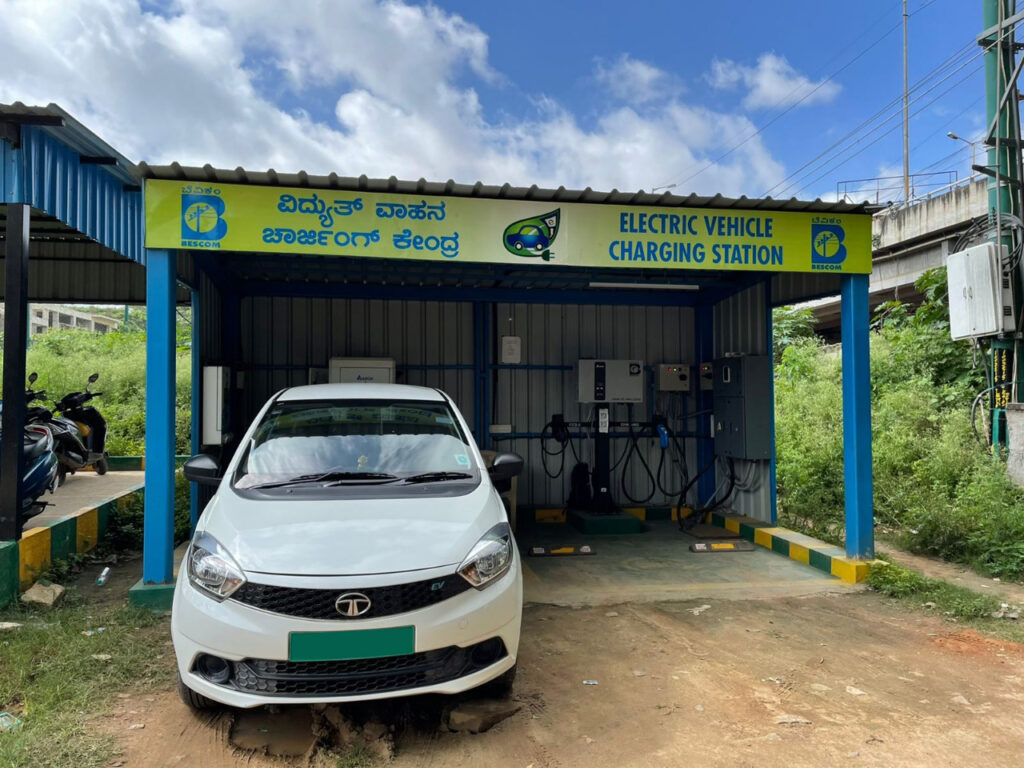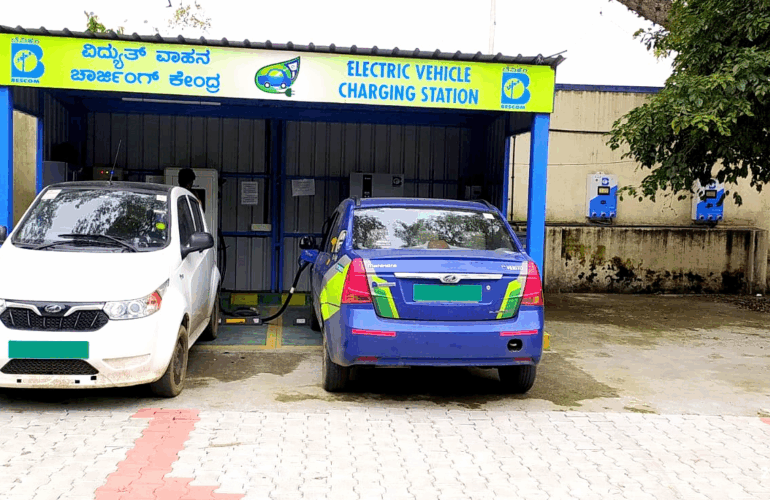
Public Electric Vehicle Charging Station
A public Electric Vehicle charging station is a charging station that is accessible to everyone. Anyone can charge their vehicles at these charging stations.

A public EV charging station is a facility where electric vehicle owners can charge their electric vehicles using AC or DC chargers, accessible to the general public.
- Connect the electric vehicle to the charger
- Authenticate and start the session
- End the charging session
Install the EV MITHRA application to locate EV chargers set up by BESCOM and charge your vehicle using the same app.
Setting up electric vehicle charging stations is a delicensed activity in India.
Most stations offer:
- AC chargers (AC001): Suitable for slow charging.
- Type 2 AC chargers: Compatible with most electric cars.
- LEVDC/LECCS DC chargers: Compatible for electric two-wheelers.
- DC chargers (DC001, CCS2, CHAdeMO): Used for fast charging, mainly by electric cars and commercial vehicles.
{"cpt":"testimonial","style":"3","columns":"2","show":2,"order":"DESC","orderby":"DESC"}

